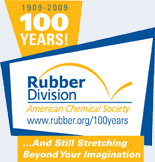![[ Visit ACS Rubber Website ]](images/logo.jpg) |
|
Effect of IPR Loss Rates on Tire Rolling Resistance, Vehicle Fuel Economy, and CO2 EmissionsTuesday, April 27, 2010: 10:45 AM
Akron/Summit Ballroom (Akron/Fairlawn Hilton Hotel)
Inflation pressure is a critical property for optimum tire and vehicle performance. Air pressure affects tire traction, cornering coefficient, rolling resistance, tread wear and durability. Only when a tire is properly mounted on a rim and inflated to the vehicle manufacturer’s specification can it perform as designed to provide the driver with adequate traction and steering control, and optimum vehicle fuel economy.
Using available tire rolling resistance force data, the additional fuel consumed and corresponding increase in CO2 emissions is calculated upon switching from the original equipment to replacement tires for a small passenger car and for a SUV/LT. Since pneumatic tires continuously lose air due to diffusion through the rubber, tire inflation pressure retention (IPR) monthly loss rates are used to estimate additional fuel that is consumed as a function of tire under-inflation. Results are calculated for the Ref: 2009.1944 |
